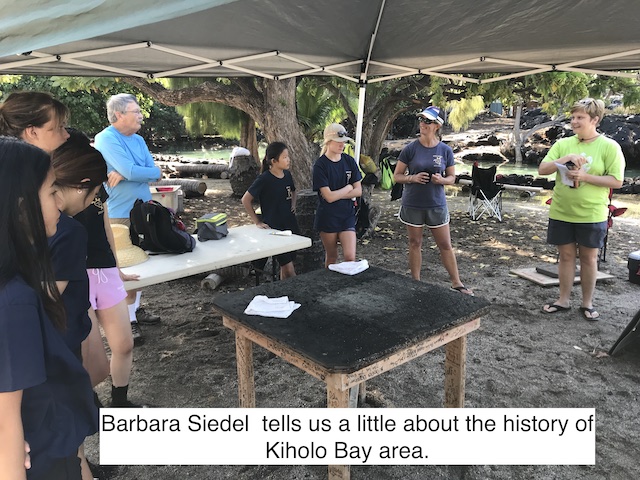Three members of the NOAA Marine Turtle Biology and Assessment team came over to join our HPA team for two days of field work to capture and tag honu at Kiholo Bay and 22 Puako Beach Road, Puako, Hawaii.
On Tuesday (11/10/19) We went to Kiholo bay hosted by TNC's Biologist, Barbara Siedel. We arrived around 0900 hours, set up our work area and began capture and sampling work around 0930 h.
During the time from 0930 to around 1400 hours, we were able to capture and sample 10 honu. The honu ranged in size from 5.4 kg to 40.8 kg and, of the 10 honu captured 5 were recaptures and 5 were new captures. We were able to obtain blood and tissue samples from all 10 animals and all of them were tagged with oxytetracycline (a bone growth marker). All animals were safely and harmlessly released with appropriate mototool numbers 82 to 89.
During the late morning and early afternoon, the weather turned a little sour and there was significant thunder and lightening which caused us to reduce and finally cancel our efforts at capturing and working up honu.
On Wednesday, 11/20/19, we picked up a second team of HPA students from the upper and middle schools and joined the MTBAP personnel once again. This time we traveled to 22 Puako Beach Road and set up a working area at the public access area. The weather was clear and there was a strong onshore wind with moderate swells from the west. The tide was quite high which we thought might be a problem but we now think it was a blessing because the honu were in the area feeding in the morning.
The total for the two days was 21 honu captured, sampled and harmlessly released.
We started capture work around 0930 h and were lucky to get animals on a pretty regular basis right up to 1200 h when we decided to break for lunch.
At the end of the day, we had been able to capture and sample 11 honu. 10 of the 11 were new with only 1 recapture. The size range was narrower that Tuesdays sample at Kiholo with a size range of 9.6 to 34.2 kg. The size of the animals was more towards the large juvenile range with only one really small critter capture.
We were able to obtain samples from all of the animals and the mototools were applied (89 to 100!!!!)
Images from the two days.
The video above is a short sequence showing Ms. Jim, students and a NOAA scientist snorkel capturing a juvenile honu for weighing, measuring and tagging.
 |
| Ms Jim loads an external tag applicator prior to applying a metal tag to the left hind flipper. |
 |
| Ivanni explains what we are doing to some visitors. |
 |
| The Tagging Team at Puako. |

























































